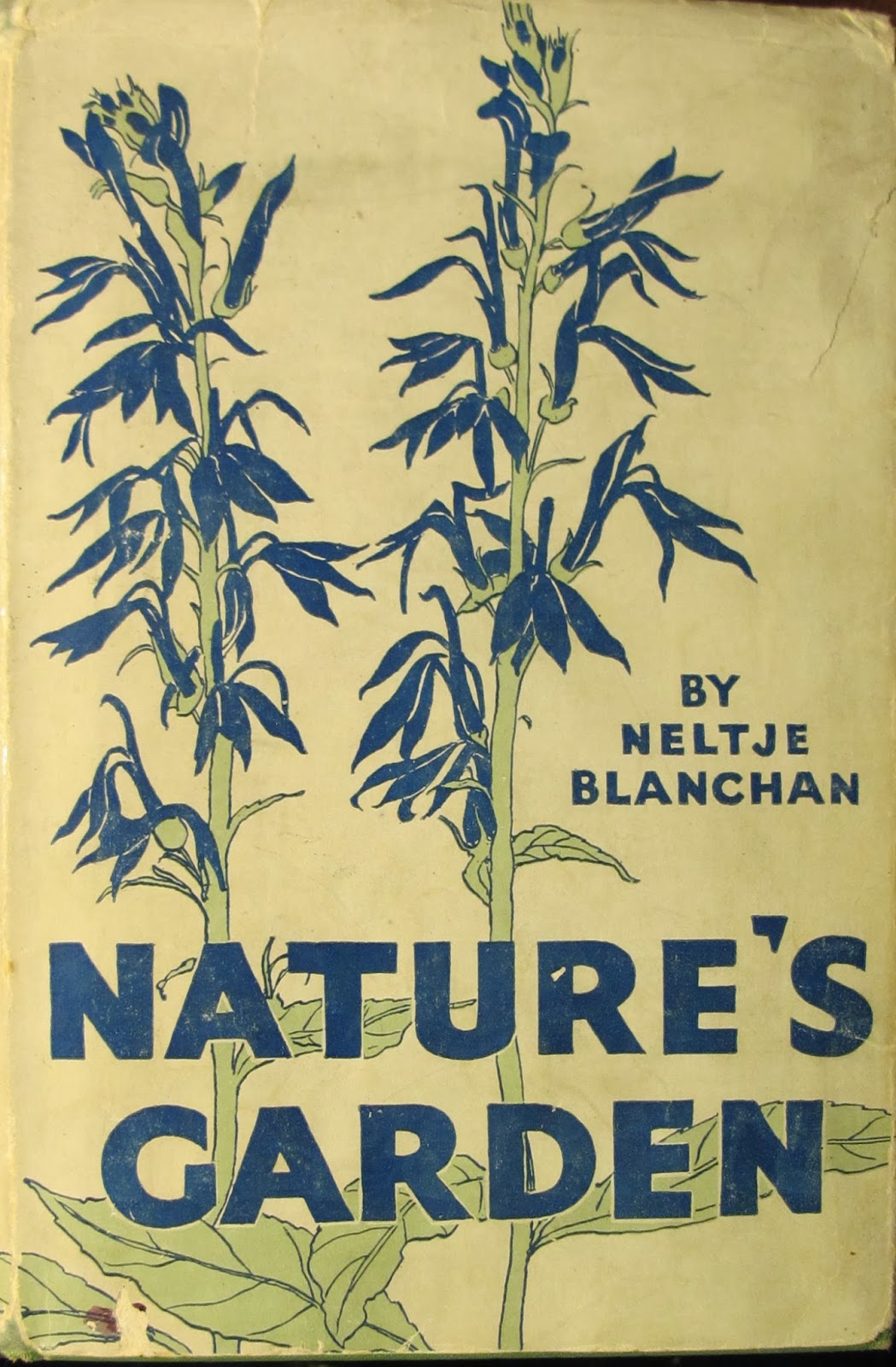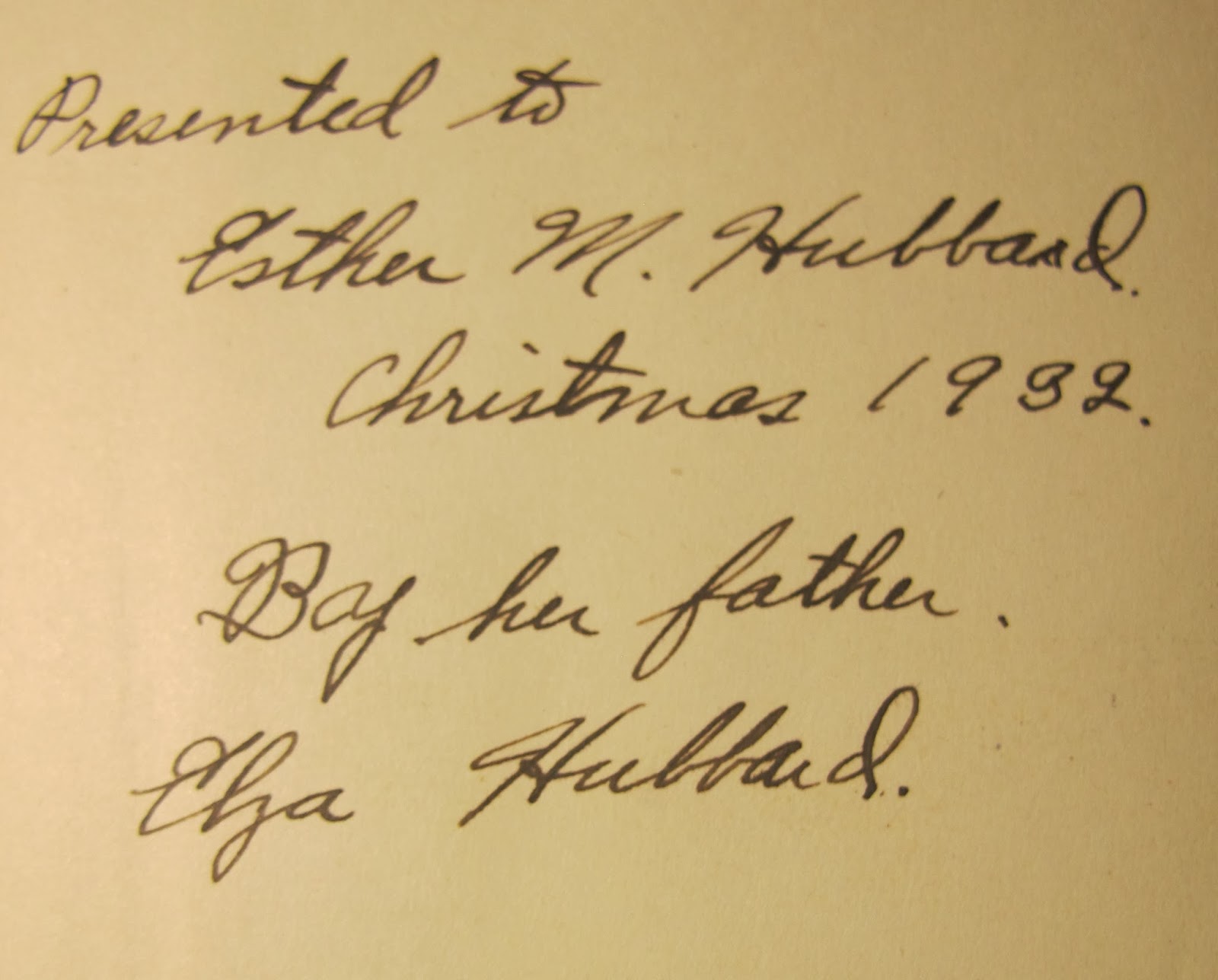
“Do the wildflowers speak to you–do they know you as a friend, or pass you by as an alien? Do you know their names–their language–their secrets?”
I know the wildflowers know my friend Gail of Clay and Limestone as a friend. She’s our hostess for Wildflower Wednesday on the fourth Wednesday off the month, and that’s today.
“Every lover of the beauties of Nature, every one who thrills to the out-of-doors, must know the wild flowers. Here in this book is that knowledge–the most fascinating of all the lore of Nature. How plants work out the problems of existence and survival–how they make their families healthy–how they start their children in life–how they found colonies in distant lands–how they use insects for their own purposes–these are some of the gorgeous mysteries which this book reveals– a book that gives every reader a broader sympathy with Nature and with Man.” ~ Nature’s Garden by Neltje Blanchan (1900, Garden City Publishing Co., Inc.)
Lucky Esther M. Hubbard received this book for Christmas from her father in 1932.

And lucky me because Jo Ellen, The Hoosier Gardener, found this book and left it on my doorstep the other day. (Yes, I do run a home for old gardening books. They arrive here by many means and all are welcomed. There are shelves for all and more coming, but that’s another story.)
What makes this book more interesting than, and different from, other wildflower books is that Blanchan wrote it with insects in mind. In the preface she wrote, “Inasmuch as science has proved that almost every blossom in the world is everything it is because of its necessity to attract insect friends or to repel its foes–its form, mechanism, color, markings, odor, time of opening and closing and its season of blooming being the result of natural selection by that special insect upon which each depends more or less absolutely for help in perpetuating its species–it seems fully time that the vitally important and interesting relationship existing between our common wild flowers and their winged benefactors should be presented in a popular book.”
What could be better than to have a book that describes not only the wildflowers, but also the insects that visit them? It makes perfect sense to put the two together. After all insects and flowers go together like peanut butter and jelly, like bacon and eggs, like peas and carrots, like steak and potatoes.
Wow, all this wildflower and insect talk is making me hungry. Thank goodness I have some apples to eat, brought to you by the apple blossom and the bee. They go together like meatloaf and mashed potatoes, like milk and cookies… like wildflowers and insects.


A good post. It makes me want to read your book. Lucky you that you are magnetic to old garden books.
Sounds like a fantastic read!
Happy Wildflower Wednesday!
Lea
I would love to read this book!
This book is certainly a treasure – and a reminder that certain information sometimes gets lost, and then reappears as a whole new insight. I'm glad we are paying more attention to pollinators and the whole insect/flower dynamic.
A wonderful post Carol. I might have to look for this book it sounds perfect. Happy WW! gail
How wonderful that this book found its way into your home, Carol, where it can be cherished!
I appreciated your analogies, but frankly, speaking of insects doesn't make me hungry:)